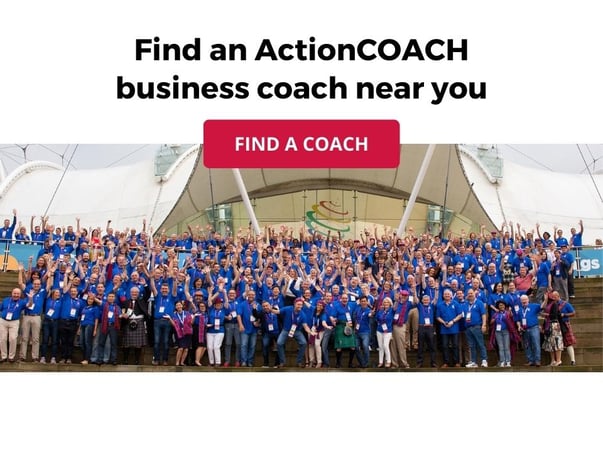As a business coach, you don’t always have the answers to every question. And, what you should know is that you aren’t required or expected to. Your role as a business coach is to empower your clients and lead them to think about, question, brainstorm and find solutions. People who are curious, empowered and confident to think for themselves don’t need anyone else to give them solutions. Through guided examination, they are able find solutions on their own.
This is what you want to achieve with your clients. At ActionCOACH, we are avid proponents of the GROW Coaching Model. Developed in the 1980s by Sir John Whitmore who authored Coaching for Performance, this model has been widely used for decades to nurture more effective ways to lead in business.
The GROW Coaching Model provides a framework with questions to create goals, identify obstacles, identify different options, query the effectiveness of these and determine an action plan without you forcing any particular idea or direction.
The beauty of this is that it encourages realistic goal setting and leads to a clearly defined outcome in manageable phases. Using this model, you can empower your clients to actively participate in identifying problems and brainstorming ideas to uncover solutions.
GROW is an acronym for:
Goals
Reality
Options
Wrap Up
Use G-R-O-W as a checklist for your coaching sessions. Let’s look at each step and some of the questions you can ask:
Goals
The first step is to define the goals for the coaching session as well as their future aspirations. Goals must be SMART: Specific, Measurable, Acceptable, Realistic and Timely. Encourage your clients to write down their goals. This helps to formalise them. You can step in as coach to ensure that goals are not too complex and are within reach. If a goal is too complex, break it down and focus on a smaller sub-goal.
You could ask questions such as,
· What do you/we want to get out of our coaching session?
· What are your key areas of concern?
· What would you like to focus on?
· What do you want to achieve?
· Is this a realistic goal?
· How will you know you've reached your goal?
· Can we cover this in the time we have available?
Reality
This step is about assessing the status quo and becoming aware of that reality. You want to encourage your client to self evaluate and assess the obstacles or barriers to them achieving their goals. Importantly, you also want to encourage your client to explore their strengths during this phase.
Raise their awareness of the current situation by asking questions such as,
· What is happening now?
· What’s working for you now?
· What is not working for you right now?
· What actions have you taken?
· Why do you think these have not worked?
· What went well?
· What factors contributed to it going well?
· Could you have built on these?
Options
This is the ideas generation stage. Start a creative brainstorming process with your client. Without prescribing any specific courses of action, you can offer some suggestions. Help shift their perspective towards finding solutions from options that are available to them. It is important that options are written down.
Ask questions such as,
· What options do you have?
· Are these realistic and within your control?
· What are you doing already that’s working?
· What else could you do?
· What are the pros and cons of these options?
· What are the costs and benefits?
Wrap Up
The final step involves choosing the most suitable, doable and achievable option and converting it into a plan of action. Uncover what your client is actually willing and motivated to do in order for them to move towards their goal. This helps to entrench their accountability and provides a structure for tracking their progress towards meeting their goals.
Questions you could ask include,
· What are the next steps to take?
· What will be the steps that follow these?
· What exactly will you do to reach your goal, and when?
· What will you do to move forward?
· How can you keep track of your progress?
· Who can support you?
· How confident are you that you can do this?
· What would make you more confident?
· How motivated are you?
· Will this plan help to get you to your goal?
Use the GROW Coaching Model in your one-to-one coaching sessions and conversations as well as in group settings. When coaching individuals, the model creates an environment for exploring ideas and unearthing motivation for setting goals and the development of realistic actions in the pursuit of achieving them.
In a team or group setting, this model is a way to fire up morale, initiate ideas and inspire teamwork towards common goals. It gets everyone onto the same page, provides clarity, defines roles and determines the way forward in phases. This approach also ensures that each person is able to find a connection to team goals.
Remember!
In the words of John Whitmore; “Coaching is unlocking people’s potential to maximize their own performance. It is helping them to learn rather than teaching them.”
The next steps
Let's start working together to build a business that works without you. Click here to find a coach in your local area.
You might be interested in



.jpeg?width=624&height=427&name=AdobeStock_275718943%20(1).jpeg)
